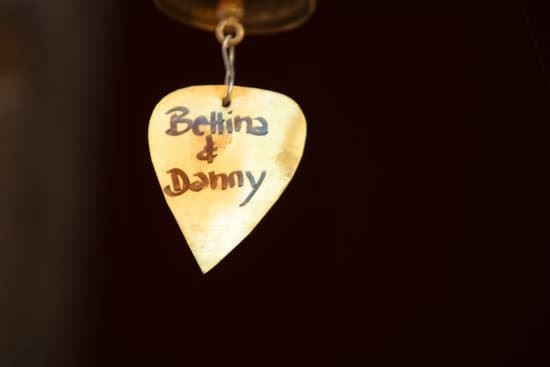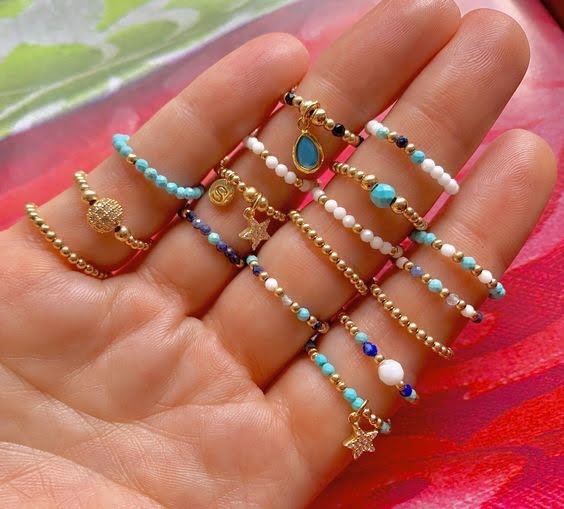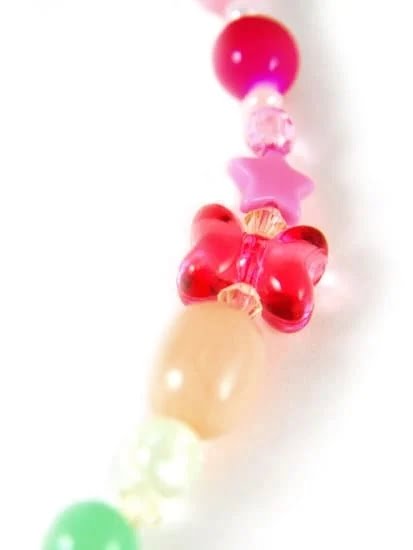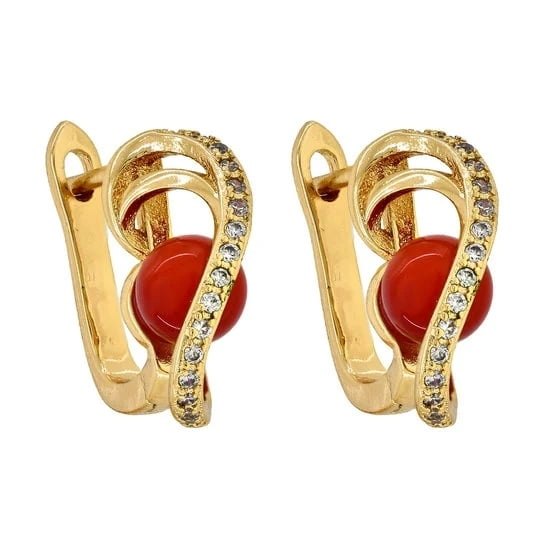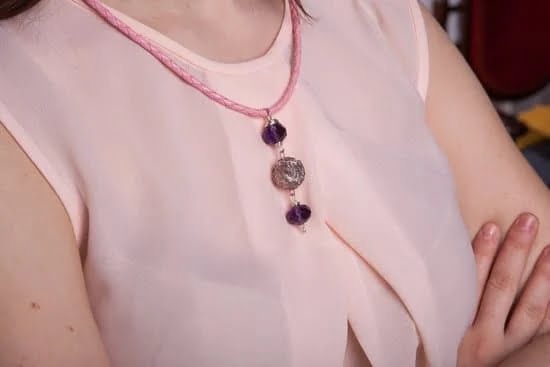Introduction
Custom jewelry makers are driven by a passion for creating beautiful, unique pieces that stand out from the rest. They work diligently to create stunning and intricate pieces of jewelry, appealing to customers who need something special or truly one-of-a-kind. These custom jewelry makers often have an artistic vision and eye for detail that allows them to craft meaningful and timeless pieces.
Learning the basics of jewelry making is necessary in order to become a custom jewelry maker. In particular, having an understanding of precious metals like gold, silver, and platinum is essential in order to create quality items with longevity. Other areas of expertise may include gemology as well as working knowledge of buffing, grinding, engraving, welding, setting stones, and soldering. Classroom or online courses are available to learn various techniques used in the industry. Additionally, having the ability to use tools such as pliers, hammers, saws, drills and hardening tools properly is part of creating custom jewelry.
Once someone has acquired the knowledge needed to make their designs come alive through skills refined by practice and trial & error, it will be time to make a business plan. It’s important for a successful venture to include business branding concepts such as logo design, advertising materials such as flyers or business cards and other marketing material. Becoming proficient in social media platforms such as Instagram which are dedicated just for this kind of entrepreneurial activity can also help generate attention for your business right away. Knowing who your target market is whether it’s brides looking for wedding bands or someone wanting something special made just for them can greatly affect the type of products you offer so proper research would be key at this stage too! Finally discovering if taking on commissions or selling completed pieces directly online would suit best should also be researched ahead before any further actions are taken.
Once established in the custom jewelry maker field you may choose either mass producing items or focusing strictly on commissioned orders depending on what suits your style best as well as what is more profitable! You may choose to obtain certification from relevant organizations such as Gemological Institute America (GIA) or Jewelers Organization Network International (JONEI). Continuous learning about new techniques in order to stay on top of trends will give you an edge among other masterful jewelers – perfecting those skills through practice with feedback from potential customers can really pay off when it comes times showcase your talents! Taking steps like these along with dedication & carefully planning approach into personalising creations will certainly fulfill aspirations being a successful custom jewellery maker!
Gathering Essential Tools and Supplies
Gathering essential tools and supplies is the first step towards becoming a custom jewelry maker. There are several options available depending on your individual needs and skills. You can find jewelry making resources in many different places including online stores, craft stores, specialty shops, and even hardware stores! Online sites like eBay or Etsy are great for finding affordable supplies to get you started. At brick and mortar stores, you’ll be able to get a hands-on look at items you need for your customized jewelry making project. Craft stores tend to offer a more expansive selection of beads, charms, chains, clasps and any other materials that may be needed for the creative process. Specialty shops may also carry more obscure pieces necessary for creating one-of-a-kind designs. Finally, hardware stores often carry various types of pliers and other tools needed in custom jewelry production. Once you have established basic knowledge of the components used in making customized jewelry pieces, practice will help refine your techniques.
Identifying the Best Materials for Jewelry Making
Start by understanding the quality and cost of various jewelry materials available on the market. Whether you are looking at metals, stones, gemstones, or pearls, you need to understand the different characteristics and qualities that make up each material. Consider cost-efficient options which may not be as precious or durable as higher priced materials but still look great with a little creative forming and construction. Be sure to compare costs between wholesale suppliers to get a better deal on your materials over time.
You should also research to determine which types of jewelry pieces will be easier for you to craft based on your skills and equipment. For example, if you plan on creating rings from sterling silver, invest in specific tools and techniques so you can maneuver the wire into intricate shapes without deforming it. Otherwise, consider making simpler pieces such as earrings or pendants using softer metals like gold-filled or gold-plated wire. Get creative in your designs by adding interesting textures or colors through either heat treatment, patina application, oxidation, enameling or stone settings to create unique pieces for your customers.
Take the necessary steps to properly set stones and use sealants appropriately when crafting custom jewelry pieces. Utilize these industry standards diligently when working with gemstones and precious metals so as not to cause damage that could reduce value over time. Invest in high quality pliers and other handheld tools that help facilitate accurate cutting of metal pieces and setting them into frames for stone-mounting procedure until fully secure against any movement that could lead to deterioration of both stone and setting material. Be sure to read instructions carefully before attempting unfamiliar tasks so undesired results can be averted usually due to negligence caused by inexperience.
Building a Portfolio of Your Work
To become a successful custom jewelry maker, one must first build a portfolio of their work. Creating a portfolio is an important way to showcase your creativity and skill as a craftsman. Your portfolio should be attractive and engaging in order to draw the attention of potential customers, who may want to purchase your pieces or hire you for custom orders. As your portfolio grows and evolves, so will the opportunities for selling your jewelry.
When constructing your portfolio, keep a few strategies in mind:
1. Focus on Quality over Quantity – Don’t just put any piece into your portfolio gallery; make sure every item is beautifully crafted and creative in design. Taking the time to create higher-quality pieces as opposed to lower-quality items can help you get noticed by more people.
2. Take Good Photos – A picture can say a thousand words! Show off the beauty of the jewelry you’ve created by taking high-resolution images that are well lit and shot from different angles. This will show off the details of your handcrafted pieces better than low-quality photos will.
3. Utilize Different Platforms – Don’t rely entirely on social media platforms; while they’re great places to market yourself, they are not always good spaces for showcasing artwork due to limitations such as memory storage size or photo resolution restrictions. Instead use other websites like Etsy or even have a website created specifically for displaying photos of your pieces and updating customers with new information about upcoming projects or works in progress—this will offer potential clients more information about how you create each piece which could give them more inspiration for further creative ideas for their order requests!
Networking with Other Jewelry Makers
Networking with other jewelry makers is an essential part of becoming a custom jewelry maker. It provides an opportunity for aspiring jewelry makers to connect with experienced and established professionals in the industry who can guide them on their journey and provide information about resources, techniques, and current trends. Through networking with accomplished jewelry makers, one can also gain valuable insights into the art of custom-made jewelry, such as what tools are needed, what materials to use, and the techniques necessary to create unique pieces. In addition, networking gives custom jewelers access to new clients and potential customers by exposing them to different markets through word of mouth referrals from other colleagues in the field. Finally, networking is advantageous for building lasting professional connections that can lead to collaboration opportunities in the future. Jewelry making is a field that requires collaboration between professionals in order for new ideas and designs to be created, so establishing positive relationships between jewelers is fundamental for both individual growth and progress within the industry.
Learning Jewelry Making Techniques
To become a custom jewelry maker, one must first learn the fundamentals of jewelry making. These skills include mastering tools, soldering metals, and forming pieces with hand-files, hammers and other tools. With the knowledge of these techniques in place, a new jeweler is then ready to move on and explore how different materials can be used in order to create unique works of art. In addition to the basics of jewelry making, such as soldering metals and using specialized tools; there are a number of techniques that allow artists to make creative constructions out of various media such as stones, gems beads etc..
When it comes to creating custom designs for jewelry items like rings, necklaces or earrings it often starts with creating sketches by hand or through computer assisted design (CAD). This can then be followed up by rendering shapes from these sketches on wax blocks or digitally on computers. Jewelers may also choose to combine metals such as gold and silver with precious stones to create detailed designs. In some cases, repoussé – which gives a relief or embossed look–or enameling may be used too. Further details can be added by engraving patterns into the material or setting intricate stones onto the piece with prongs that are specific in shape. Alternatively other techniques such as wires wrapping around gemstones may also be employed when designing custom jewelry items.
Using Design Inspiration
Becoming a custom jewelry maker can be a very rewarding experience and with some strategic planning, you can be successful in the business. To start, you’ll want to identify where you draw your design inspiration from since this will inform how you approach your creative process. This could mean turning to art museums, online design galleries, or even experimenting on your own. Once you’ve identified a few sources for inspiration, it’s time to ask yourself: what themes inspire me? Is it abstract shapes, natural organic forms, architecture elements? Doing this exercise will help guide your thinking and allow layers of creativity to be built into your designs .
Once you have a better understanding of the source and pathways of creative inspiration that resonates with you, it is important to put together a plan for implementation. Start by looking at the materials available in your area and the cost associated with them. Determine what type of findings work best for the pieces that you have in mind, then look into supplies needed such as soldering equipment, buffing wheels and polishing machines etc. Research online tutorials or workshops that could assist in giving helpful tips on working with metal or gemstones. Lastly, develop some sample designs and practice crafting jewelry until perfecting techniques becomes second nature. Assembling everything that goes into becoming a custom jewelry maker – from having an eye for design and identifying potential materials to successfully creating pieces – is no small feat but taking these steps should set you off on the right path!
Creating a Unique Brand
When it comes to custom jewelry making, the most important step when becoming a maker is defining your own unique style. This can involve researching trends and techniques, experimenting with different materials, and understanding what elements work best together. Decide on your creative aesthetic or build your expertise around particular techniques such as setting, stone cutting, or forging. Clearly defining which type of jewelry you specialize in will give potential customers guidance about the pieces you craft and help them to identify you as a custom jewelry maker who can bring their dream pieces to life. Additionally, it’s essential to create a brand that communicates who you are and clearly explains why they should do business with you over any other makers. Invest time in branding yourself through creating a website that showcases the intricacies of your designs and making sure visuals are professional by using quality photography of each piece. With stand-out marketing materials that showcase the quality of both design and craftsmanship, in addition to telling an enticing story about yourself as a maker, customers will be more inclined to view your pieces as bespoke investments rather than simply buying off-the-shelf styles elsewhere.
Pricing and Selling Your Work
When it comes to pricing and selling your work as a custom jewelry maker, you must consider many factors. These include the cost of materials, the time spent creating and finishing each piece, overhead costs like renting a space or buying tools and equipment, marketing expense, and other costs associated with doing business. If you are selling online, you will need to factor in website hosting fees, insurance or protection against theft or fraud, shipping charges, etc.
Before beginning to establish prices for your jewelry it is important to understand how costs of production affect pricing. Start by addressing how much money you need to make in order for your business to be sustainable. Look carefully into all the costs associated with production in order to know what price range is feasible for each item. Knowing the approximate selling price ahead of time can also help guide choices when it comes to selecting materials and finishes.
Now that you have established a price point for each item, it’s time to create an online presence so potential customers are aware of what you have to offer. You can start by setting up social media accounts such as Instagram and Facebook as well as websites like Etsy or Shopify where people can purchase directly from you instead of relying on third-party vendors like Amazon or eBay. Additionally, write blog posts on topics related to your craft that allows readers a peek into what goes into making each piece so they know the value behind each item they are purchasing – this can help set your work apart from others whose pieces might look similar but lack special attention due to lack of experience or resources from buyers who may think they’re getting something more valuable than what they’re paying for. Additionally, advertise regularly on platforms both digital and physical – consider advertising at fairs or events near where you live so more people in-person know about your work. Ensure that customer service is up the highest standards – respond promptly and courteously when customers reach out either with questions about products or orders placed – doing great customer service will ensure return customers in future generations!
Ways to Market Your Jewelry
To become a successful custom jewelry maker, it’s important to understand the audience you are trying to reach with your pieces. You can start by researching the types of people who would be interested in buying or wearing custom jewelry. Demographic information such as age, gender, location, income, and interests can all be helpful in determining the best way to market your products.
After identifying the type of clientele that you want to target, you should create an online presence for your business by creating a website and/or social media accounts. These platforms can help create awareness about your work and provide potential buyers with images and descriptions of your products. An online store through these channels may also be a great way to make sales as people can browse and purchase items whenever they please.
It is also important to consider promoting activities like pop up shops or attending art shows & markets to attract customers who are more likely to visit in person than shop online. Collaborating with local boutiques or galleries may also be helpful since they already have an established customer base and could potentially sell some of your items on consignment basis if they match their store style. Participating in events like artist fairs and trunk shows are great opportunities for customers to see how unique each piece of jewelry is before making a purchase decision. Additionally, networking locally with other jewelers or creatives could open opportunities for joint projects which could ultimately benefit both businesses. Lastly, don’t forget about promoting yourself fully through word-of-mouth marketing – getting referrals from existing clients! If a customer loves their piece of custom jewelry and are willing to share it on their own platform (Facebook or Instagram posts) or even give you their positive review , this kind of advertising is invaluable as potential customers will trust them enough to make them purchase from works from someone they know nothing about!
Conclusion
As with any craft or skill, becoming a custom jewelry maker is an attainable goal if you are committed to the process. The most important things are to research the tools, techniques, and materials necessary for the trade and continue to gain knowledge. Creating a portfolio of your work will also help you receive accolades and build a reputation for yourself in your creative industry. Lastly, networking can be a great way to connect with other established jewelers and perspectives clients as well as open up business opportunities that can lead to success as a custom jewelry maker. So, put some elbow grease into learning the basics of jewelry making and crafting and have patience while working on creating your portfolio – this will lay the groundwork for achieving success in jewelry making.

Welcome to my jewelry blog! My name is Sarah and I am the owner of this blog.
I love making jewelry and sharing my creations with others.
So whether you’re someone who loves wearing jewelry yourself or simply enjoys learning about it, be sure to check out my blog for insightful posts on everything related to this exciting topic!

